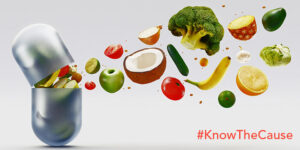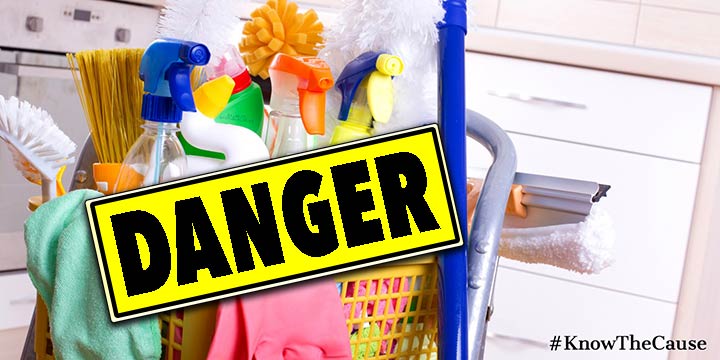

Part of living in the modern world is our daily exposure to the thousands of relatively new and unique chemicals that the industrial age has released into the world. (New, because many did not exist 100 years ago.) For better or worse, many of the products that make our lives easier, more convenient, or that make the modern world turn might have implications on our health. Unfortunately, many of these products never receive the rigorous testing they should likely undergo before being allowed into the market or environment.
Furthermore, many of the people in the industry who should likely bear the burden of making sure these products are safe are rarely held accountable, even when it is discovered their products are unsafe. Unfortunately, a revolving door seems to exist between industry and the regulatory agencies tasked with holding them accountable.
There are independent agencies, like the Environmental Working Group (EWG) that provide good resources for consumers about what products are safe and what products to be wary of. Because these products are virtually inescapable, knowledge is power and vigilance is key for avoiding exposure to them.
1. Bisphenol A (BPA) –– This product is found in plastics, primarily softer plastics. Avoid any plastic containers with the recycling number 7 (usually visible on the bottom of the container), as these are likely to contain BPA. BPA is a known endocrine disruptor and mimics estrogen. It has already been banned in baby products.
2. Phthalates –– These are found in plastics but also in consumer products such as cosmetics. Phthalates are an enormous class of chemical, but many of them have been linked to cancers, obesity, ADHD, type II diabetes, fertility, and reproductive problems, behavioral problems, and autism spectrum disorders.
3. Sodium Nitrate/Nitrites –– These chemicals are used in processed meat products, like hot dogs and bacon, to preserve color. These are known to cause different kinds of cancer, yet their use is still permitted.
4. Volatile Organic Compounds (VOCs) –– VOCs encompass a wide variety of gasses that are emitted from a variety of thousands of solid or liquid products. Organic in this sense simply means a product that contains carbon, not organic in the sense of organic produce. These products include paint, paint strippers, solvents, wood preservatives, cleaners, disinfectants, aerosols, air fresheners, pesticides, and many other products. Any products that “off-gas” a chemical-type smell is something you should be wary of, particularly in your home, where VOCs collect up to 10 times higher than outside.
5. Mycotoxins –– Mycotoxins are secondary byproducts of mold, yeasts, and fungi, and they are known to contaminate certain parts of our food supply, including grains, corn, peanuts and soy. Mycotoxins can also be present in buildings contaminated with mold. These are some of the most toxic, naturally-occurring chemicals known to man.
6. Radon –– Radon gas is a naturally occurring, odorless, tasteless noble gas that can cause lung cancer. It can contaminate some homes, seeping through cracks in the foundation. The only way to know if you are being exposed is to test your home.
7. Growth Hormones –– The use of growth hormones is still unfortunately pervasive in the conventional farming community, despite these chemicals being linked to early puberty and other health problems. The easiest way to avoid them is to avoid conventionally raised meat, poultry, and dairy products in favor of organic.
8. Polychlorinated Biphenyls (PCBs) –– PCBs were banned in 1979, but for anyone living in an older home (or renovating older homes) or dealing with older electronic devices or older heavy machinery, the risk of exposure still exists. These were manufactured and widely used for over 50 years, and many remain in our environment today.
9. Flame Retardants –– Flame retardants have been heavily used for years in furniture and building materials for years (for obvious reasons), but there is evidence these chemicals can cause serious health problems like cancer and readily absorb through your skin.
10. Mercury –– Mercury, unfortunately, is very pervasive throughout our environment due to years of burning coal and oil. Mercury is of particular concern in fish; stick to fish lower in the food chain and avoid fish like swordfish or shark.
Doug Kaufmann has written many books that cover a full range or health issues. Find out which of his books best suits you by clicking the button below.
Doug Kaufmann developed his diet after years studying the clinical effects of pathogenic fungi on the body. Fungi and yeasts can become parasitic organisms on and inside our body, causing health problems that can be difficult to diagnose. Learn more about the Kaufmann Diet, change your life and know the cause.
We encourage all visitors to this site to take some time and study these technical articles prior to initiating lifestyle changes, including dietary changes and to do so with their physician’s awareness and approval. The articles posted in this link are scientific and with few exceptions are taken from medical journals familiar to healthcare workers.
Looking for help assembling antifungal Kaufmann Diet approved recipes for breakfast, lunch or dinner? We have several videos, books and recipe write ups here on Know the Cause that will help your health journey. The recipes in this section are so good, you’ll feel like you’re indulging. No sacrifice needed! Enjoy.
© 2024 Mediatriton Inc. All Rights Reserved • Website by Skynet Solutions